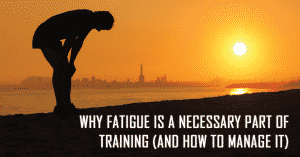Perhaps one of the biggest mistakes marathon runners make is not taking enough rest after finishing their goal race, especially if they’ve been consistently training for months on end.
Understandably, for a dedicated runner, taking an unforced day off, or worse yet a full week off, is about as enjoyable as a trip to the dentist for a root canal. Most runners have an irrational fear that missing a few runs will dramatically diminish their fitness.
Moreover, putting your training on pause seems counter-intuitive after a great race – you want to capitalize on your fitness and continue to set new personal bests. Likewise, after a disappointing race, the last thing on your mind is resting; rather, you want revenge and you’re anxious to get back on the starting line.
Unfortunately, not taking enough time to fully recover after a marathon often leads to overtraining and injuries. Not only does resting for seven to ten days have little negative impact on your current fitness, the long-term gains will outweigh any temporary reduction in fitness.
In this article, we’ll look at two different reasons you should consider taking some serious downtime after your marathon. More importantly, we’ll provide you with the scientific evidence as well as examples from some of the best runners in the world. Finally, we’ll outline a typical marathon rest protocol so you can begin planning your next training segment.
How the marathon damages your body
Muscles, tendons, ligaments, and almost every physiological system is challenged when running a marathon. It doesn’t matter if you crushed your goal or struggled to walk/jog to the finish and you don’t feel sore, 26.2 miles is a long way to go and your body endures tremendous physical duress. Here is a list of some of the scientifically measured physiological systems that are impacted after running 26.2 miles:
Skeletal Muscle
One scientific study looked at the damage done to the calf muscles during a marathon race and concluded that both the “intensive training for, and the marathon itself, induce inflammation and muscle fiber necrosis that significantly impaired muscle power and durability”.
This study makes it clear that your muscles are undoubtedly weakened and need extensive recovery before returning to full training. Given this study also examined calf muscles during an extended training block, the need for downtime applies to any arduous training segment.
Cellular damage
Cellular damage post marathon is best measured by the presence and production of creatine kinase (CK) – a marker that indicates damage to skeletal and myocardial tissue – and increased myoglobin levels in the blood stream.
One study concluded that CK damage persisted more than 7 days post marathon while another study discovered the presence of myoglobin in the bloodstream for 3-4 days post race. Both of these studies clearly indicate that the body needs rest post marathon to fully recover from the cellular damage caused during the race.
Unlike muscle soreness, these markers of hard training and racing aren’t always noticeable. This is why you need to take downtime after a marathon, even if you don’t feel sore.
Immune system
Finally, studies have shown that the immune system is severely compromised after running the marathon distance, which increases the risk of contracting colds and the flu.
A suppressed immune system is one of the major causes of overtraining. Therefore, skipping a much needed rest period could lead to interrupted training down the road, which could significantly derail your long-term goals.
Anecdotal evidence from elite runners
While scientific evidence helps support training assumptions, perhaps the most obvious example of the importance of taking downtime is exhibited by elite runners. Elite runners are advised by the best coaches in the world and their livelihood depends on consistent training and racing.
Professional runners, who make their living running races, still take downtime after marathons and long training segments. 2012 Olympian Desiree Davilla, and all members of the successful Hansons-Brooks Distance project, take a fairly significant rest period after marathons.
In a recent interview, Desi Davilla mentioned that she took two weeks off and then two weeks very easy after her Olympic Trials race. Having been a part of the Hansons-Brooks project myself, I can attest that this is standard protocol for all runners in the group, Olympians or not.
Taking downtime won’t negatively impact your fitness
It’s not hard to persuade a runner to believe that a marathon is difficult on the body. However, it’s quite another to convince the same runner that taking 7-10 days off to rest up won’t hurt their fitness. While it may same counter-intuitive, research has proven that resting for 7-10 days will not significantly diminish fitness.
The science of rest
Because VO2 max is one of the best measurements of a runners physical fitness, it’s the most useful baseline to compare the effect of detraining on your aerobic system. To be brief, VO2 max is an individual’s maximum ability to transport and use oxygen during exercise.
Recent studies show that there is little reduction in VO2max (1-3%) in the first 6-7 days following inactivity in well-trained runners. Furthermore, even after two weeks of not running, studies show that VO2 max decreases by only 6%.
While percentages are fantastic, what do those numbers really mean for runners? Let’s use an example of a 20-minute 5k runner. A 20-minute 5k runner has a VO2max of roughly 49.81 ml/kg/min. After 7-10 days of no running, the hypothetical 5k runner would lose about 3% of his or her VO2 max. Accordingly, after downtime, his or her new VO2max would be 48.49 and he or she would now be in 20:30 shape. While no one wants to drop 30 seconds, after a week of not running a single step, it’s certainly not a big loss and fitness that can be regained very quickly.
Anecdotal evidence from elite runners
Luckily, this slight reduction in fitness is easy to gain back. Again, using elite runners as an example (since their training and racing schedules are widely available and we can assume they are training optimally), it only takes three to four weeks for runners to return to hard training and near peak racing shape.
Meb Keflezighi might be the best example to illustrate how quickly a runner can return to peak fitness. After the 2012 NYC Marathon, Meb was forced to rest for three weeks thanks to an untimely foot infection. With just 70 days to prepare for one of the biggest races of his life – the 2012 Olympic Trials – Meb regained his fitness quickly to dispatch one of the most heralded fields in US history and punch his ticket to the London Olympics.
Going further, another injury derailed Meb’s training for two weeks in preparation for the Olympic Games. However, Meb took the needed recovery time to heal and still finished 4th place in the 2012 Olympic Marathon.
RunnersConnect Bonus
Download your FREE Marathon Recovery Schedule for Runners.
It’s a PDF showing how to recover correctly in the 3 weeks post marathon, plus our cross training guide with over 20 sample workouts for the most common cross training types
How long should you plan to rest
Most coaches and elite runners suggest you should take off one week off after a marathon, with a few very light jogs or even easy walks if you get too antsy. After a week off, training should be very light for two weeks post race.
Here is a sample schedule I suggest when runners email me with questions:
| Monday | Off – hot tub and stretch |
| Tuesday | 2 miles easy shakeout run (slow and easy) |
| Wednesday | Off – hot tub and stretch |
| Thursday | Off |
| Friday | Off or cross training – easy |
| Saturday | 2-3 miles easy |
| Sunday | Off or cross training – easy |
| Total | |
| Monday | 3-4 miles easy |
| Tuesday | Off or cross training – easy |
| Wednesday | 3-4 miles easy w/4 x 20 sec strides |
| Thursday | Off or cross training – medium |
| Friday | Off or cross training – easy |
| Saturday | 6 miles easy – no strides |
| Sunday | Off or cross training – long (90 minutes) |
| Total | |
| Monday | 4 miles easy |
| Tuesday | 5 miles easy w/4 x 20 sec strides |
| Wednesday | Off or cross training – hard |
| Thursday | Off or cross training – medium |
| Friday | 5 miles easy w/4 x 20 sec strides |
| Saturday | 8 miles easy – no strides |
| Sunday | Off – recovery |
It might sound like you would be holding yourself back by being so cautious, but your long-term progression will actually benefit as you allow your body to recover and get fully rested for your next training segment.
Good luck at your upcoming race and don’t forget to schedule a little rest and relaxation time afterwards!
A version of this post originally appeared at competitor.com





4 Responses
I am impressed by your runners tips and wish to read more; if possible to a professional knowledge level. I have a passion for physical fitness.
1) Creatine kinase, not creatinine kinase
2) should use Nieman’s studies to bolster section on immune system suppression
Good spot Sam! Will check out Nieman, great suggestion! Thank you for your input! Hope you enjoyed the article otherwise.
I just completed my first marathon and this is exactly what I needed. Thank you for writing the article and providing a printable version.